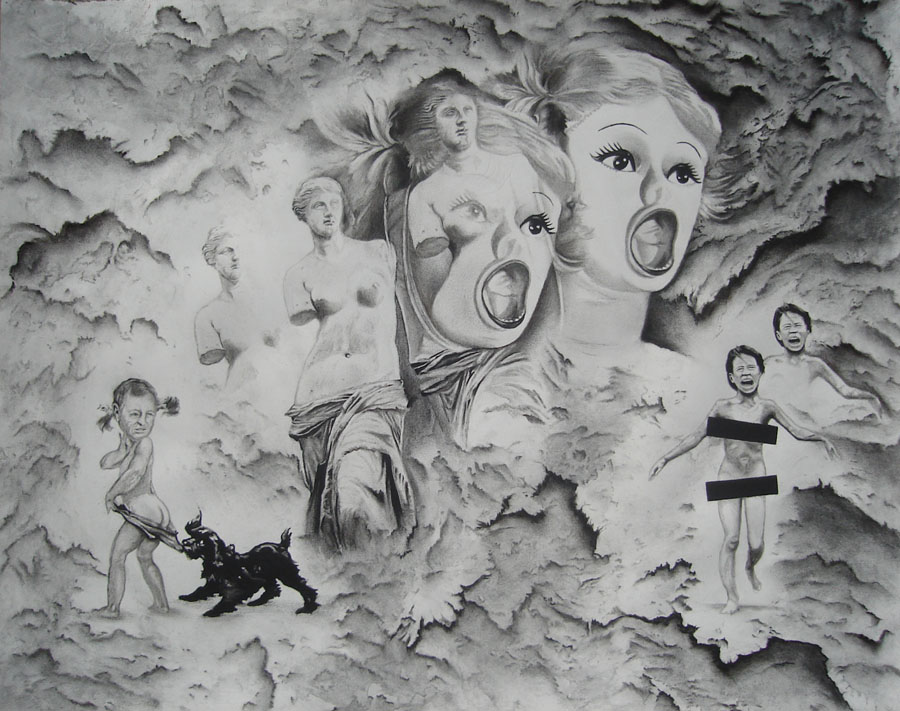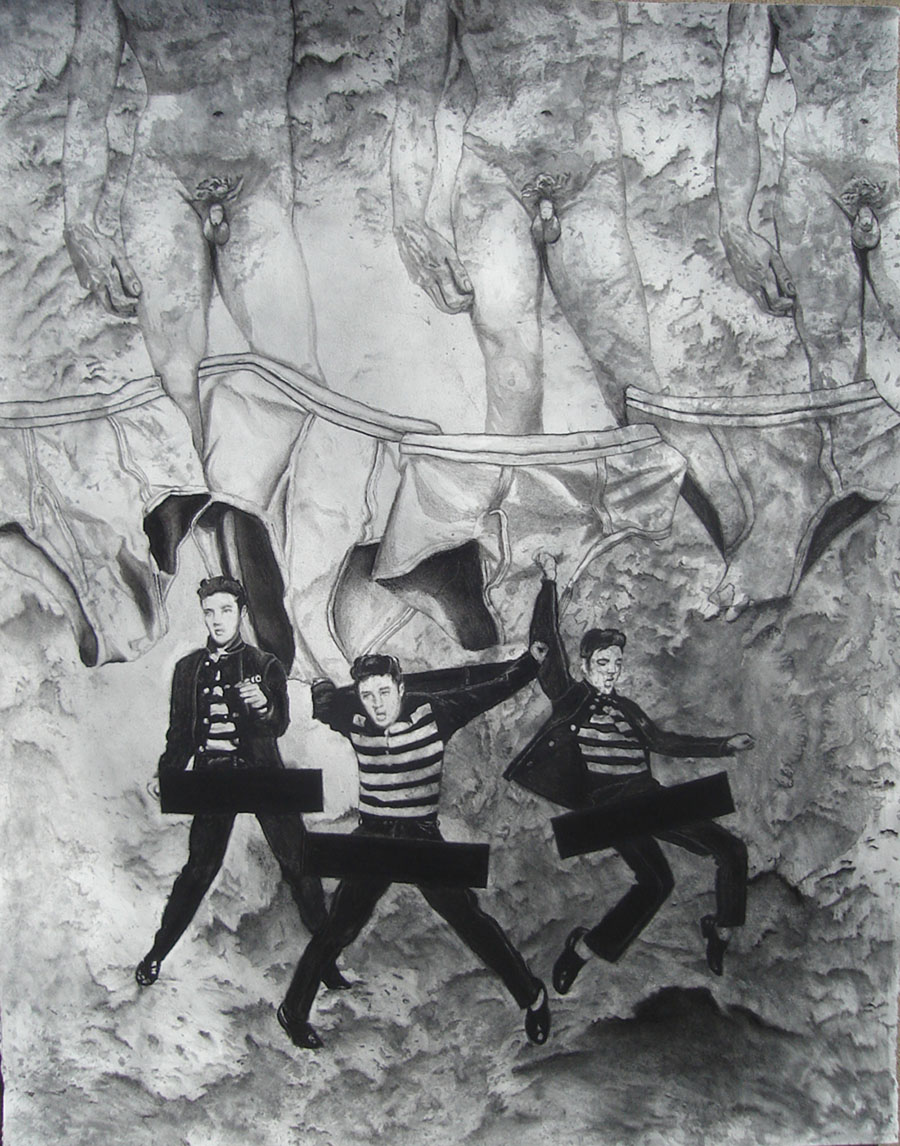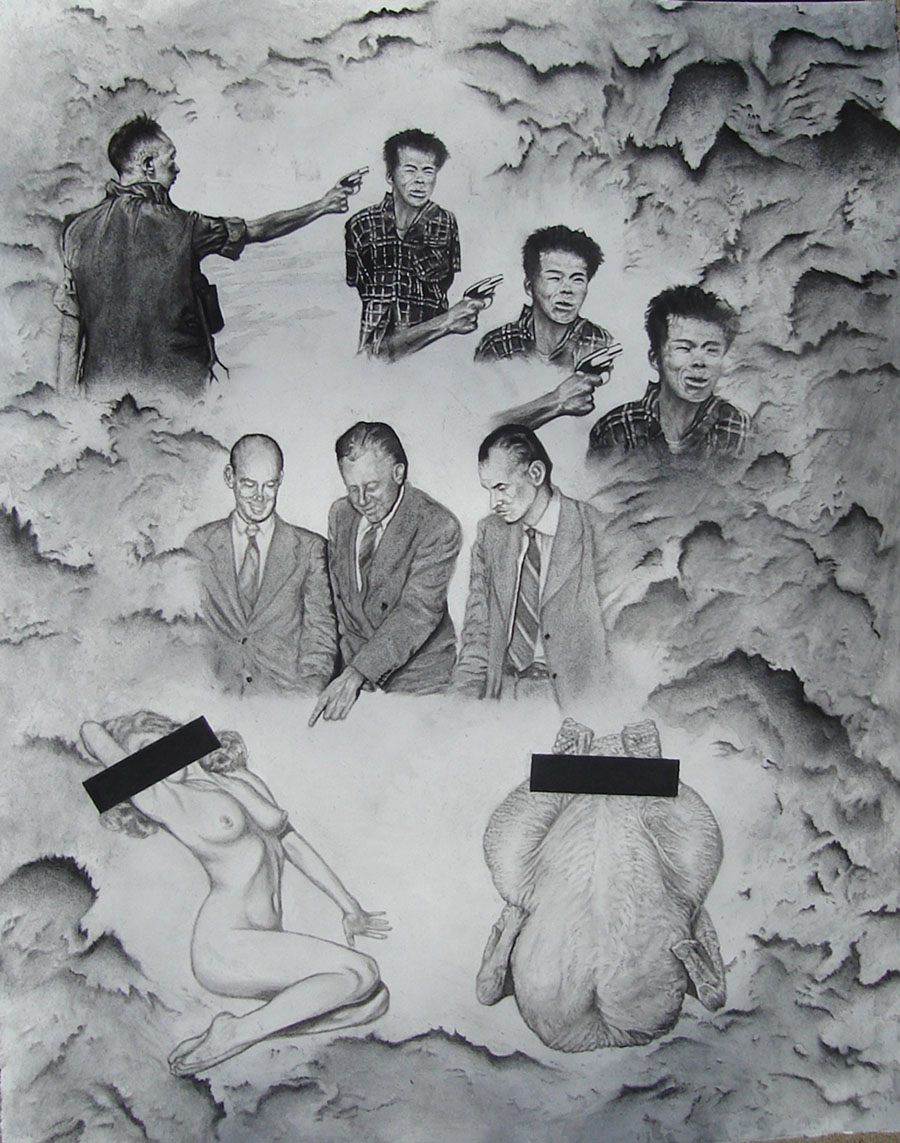“Censorship 1: The Ashcroft Years is about the act of censorship perpetuated by U.S. Attorney General John Ashcroft, who in 2002 had two statues at the Department of Justice building covered with blue drapes to hide their nudity. He reportedly did not like being photographed in front of nude statues. Ashcroft is depicted in the drawing as the little suntanned girl from the Coppertone advertisements of the 1960s. This drawing is also an homage to Salvador Dali’s The Hallucinogenic Toreador (1969-70), in which he morphed the Venus de Milo into his toreador. The drawing also depicts a version of the famous photograph of the Vietnamese girl who had been bombed with napalm. I actually saw a version of the photo in which the censor bars covered her burned breasts and genital area. The message with this part is that the violence was not censored, but the little girl’s body parts were.”
“Censorship 2: Those Damn Teenagers is about the time that Elvis Presley was censored from the waist down on The Ed Sullivan Show on January 6, 1957. The drawing also references Michelangelo’s famous David statue, which has been censored many times, even on the Simpsons cartoon show. The underwear refers to the way underwear with men is seldom censored, but underwear with women is very often censored.”
“Censorship 3: Seen and Not Heard refers to the way females are often treated in society, not heard or given voice but used for nude images, such as Marilyn Monroe in the first issue of Playboy magazine in 1953. This image is compared to the image of the famous Eddie Adams photograph of a Viet Cong prisoner being shot in the head in 1968. I also included a drawing of a nude turkey with a censor bar over its opening to further demonstrate the ridiculous nature of some censorship.”




